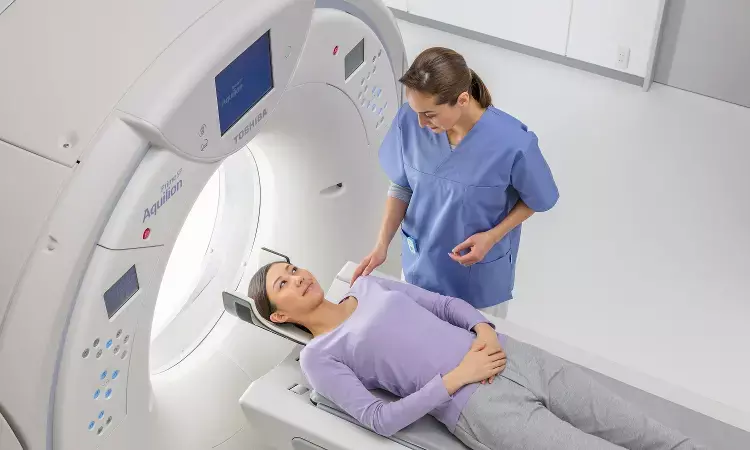- Home
- Medical news & Guidelines
- Anesthesiology
- Cardiology and CTVS
- Critical Care
- Dentistry
- Dermatology
- Diabetes and Endocrinology
- ENT
- Gastroenterology
- Medicine
- Nephrology
- Neurology
- Obstretics-Gynaecology
- Oncology
- Ophthalmology
- Orthopaedics
- Pediatrics-Neonatology
- Psychiatry
- Pulmonology
- Radiology
- Surgery
- Urology
- Laboratory Medicine
- Diet
- Nursing
- Paramedical
- Physiotherapy
- Health news
- Fact Check
- Bone Health Fact Check
- Brain Health Fact Check
- Cancer Related Fact Check
- Child Care Fact Check
- Dental and oral health fact check
- Diabetes and metabolic health fact check
- Diet and Nutrition Fact Check
- Eye and ENT Care Fact Check
- Fitness fact check
- Gut health fact check
- Heart health fact check
- Kidney health fact check
- Medical education fact check
- Men's health fact check
- Respiratory fact check
- Skin and hair care fact check
- Vaccine and Immunization fact check
- Women's health fact check
- AYUSH
- State News
- Andaman and Nicobar Islands
- Andhra Pradesh
- Arunachal Pradesh
- Assam
- Bihar
- Chandigarh
- Chattisgarh
- Dadra and Nagar Haveli
- Daman and Diu
- Delhi
- Goa
- Gujarat
- Haryana
- Himachal Pradesh
- Jammu & Kashmir
- Jharkhand
- Karnataka
- Kerala
- Ladakh
- Lakshadweep
- Madhya Pradesh
- Maharashtra
- Manipur
- Meghalaya
- Mizoram
- Nagaland
- Odisha
- Puducherry
- Punjab
- Rajasthan
- Sikkim
- Tamil Nadu
- Telangana
- Tripura
- Uttar Pradesh
- Uttrakhand
- West Bengal
- Medical Education
- Industry
PET-CT, genomic profile linked to survival in head and neck cancer patients on immunotherapy

Identifying biomarkers that predict survival outcomes and response to treatment is an unmet need in oncology. Few biomarkers predictive of response to immune checkpoint inhibitor (ICI) drugs have been described for patients with head and neck squamous cell cancer (HNSCC).
Maximum standardized uptake value (SUVmax) on positron emission tomography–computed tomography (PET-CT) has been previously reported as a potential clinical predictor for survival outcome among patients with HNSCC.
Systemic and tumor inflammation with laboratory and tumor metabolic imaging tests may provide useful prognostic information for head and neck squamous cell cancer (HNSCC) patients treated with immune checkpoint inhibitor (ICI) drugs, suggests a study published in the JAMA Otolaryngology- Head & Neck Surgery by a team of researchers from the Department of Surgery, Head & Neck Service, Memorial Sloan Kettering Cancer Center, New York, New York.
Conall W. R. Fitzgerald and colleagues set up an objective to analyze the association between SUVmax on PET-CT and survival in patients with head and neck cancer receiving ICI therapies.
The authors analyzed clinical and genomic data from patients treated with ICI for HNSCC. Patients who received PET-CT imaging within 180 days prior to ICI start date were included, and SUVmax was categorized as above or below the median. Of 143 patients with mucosal HNSCC treated with ICI, 98 met inclusion criteria for analysis.
Other clinical and genomic covariates with prior evidence of prognostic value were analyzed, including pretreatment peripheral blood neutrophil-to-lymphocyte ratio (NLR) and tumor mutation burden (TMB), as assessed using Memorial Sloan Kettering-Integrated Mutation Profiling of Actionable Cancer Targets (MSK-IMPACT), a targeted genomic sequencing panel of 341-468 genes.
The outcomes analyzed were overall and progression-free survival, and response to treatment was assessed using RECIST version 1.1 criteria and the data drawn was analyzed.
The results of the study showed that the median SUVmax was 11, and was localized to the head and neck in 47 patients (48.0%); lung, 30 (30.6%); bone, 11 (11.2%); and gastrointestinal tract/liver, 10 (10.2%).
The site of SUVmax was at a primary recurrence site rather than metastatic site in 31 patients (31.6%). However, in patients with metastases, the mean number of metastatic sites was 1.9. Immune checkpoint inhibitor treatment was given for recurrent rather than metastatic disease in 19 patients. Average time from PET-CT to start of ICI therapy was 52 days.
10.1001/jamaoto.2021.1763
Dr. Nandita Mohan is a practicing pediatric dentist with more than 5 years of clinical work experience. Along with this, she is equally interested in keeping herself up to date about the latest developments in the field of medicine and dentistry which is the driving force for her to be in association with Medical Dialogues. She also has her name attached with many publications; both national and international. She has pursued her BDS from Rajiv Gandhi University of Health Sciences, Bangalore and later went to enter her dream specialty (MDS) in the Department of Pedodontics and Preventive Dentistry from Pt. B.D. Sharma University of Health Sciences. Through all the years of experience, her core interest in learning something new has never stopped. She can be contacted at editorial@medicaldialogues.in. Contact no. 011-43720751
Dr Kamal Kant Kohli-MBBS, DTCD- a chest specialist with more than 30 years of practice and a flair for writing clinical articles, Dr Kamal Kant Kohli joined Medical Dialogues as a Chief Editor of Medical News. Besides writing articles, as an editor, he proofreads and verifies all the medical content published on Medical Dialogues including those coming from journals, studies,medical conferences,guidelines etc. Email: drkohli@medicaldialogues.in. Contact no. 011-43720751


